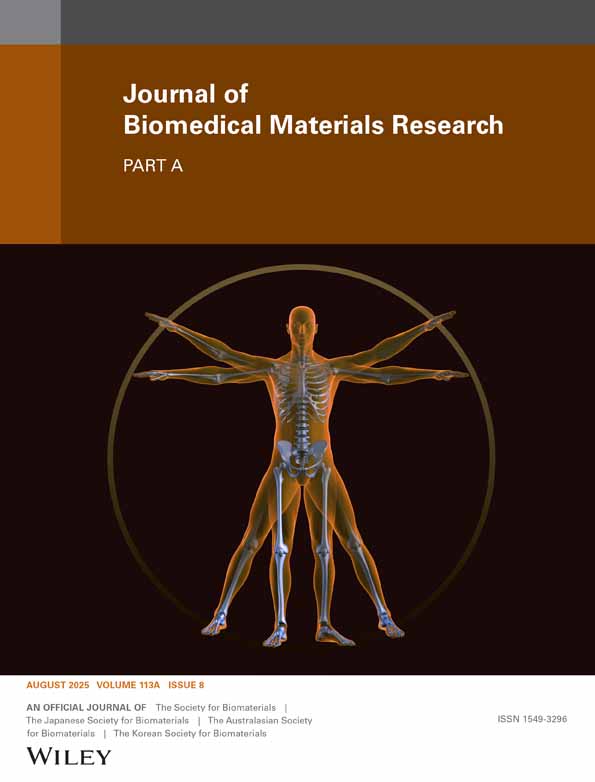Acceleration effect of basic fibroblast growth factor on the regeneration of peripheral nerve through a 15-mm gap
Abstract
In this study, nerve guides composed of poly(D,L-lactide) (PDLLA) were fabricated and used in the repair of transected sciatic nerves (15-mm gaps) of rats. Nerve guides with a two-ply structure (inner layer dense, outer layer microporous) were prepared by controlling the solvent evaporation rate. Then basic fibroblast growth factor (bFGF) was embedded in the inner layer of the nerve guides. Thus the inner dense layer not only could prevent the ingrowth of fibroblast and avoid the outgrowing nerve cable, but it also could retain the released bFGF in the guide lumen. The outer porous layer allowed vascular ingrowth and the diffusion of essential nutrients into the guide lumen. The data show that by using this nerve guide, the transected 15-mm sciatic nerve was regenerated successfully within 4 months. The recovery of function of the regenerated nerves was significantly accelerated by bFGF, as indicated by an electrostimulation test and histologic assays. In addition, the bFGF retained its bioactivity during embedding and continuously was released from the matrix, as confirmed by the results of both the dorsal root ganglia (DRG) and the Schwann cell culture in the presence of PDLLA matrix containing bFGF. The released bFGF enhanced the ability of the nerve fibers to sprout from dorsal root ganglia, and it accelerated the proliferation of Schwann cells. © 2003 Wiley Periodicals, Inc. J Biomed Mater Res 66A: 522–531, 2003




